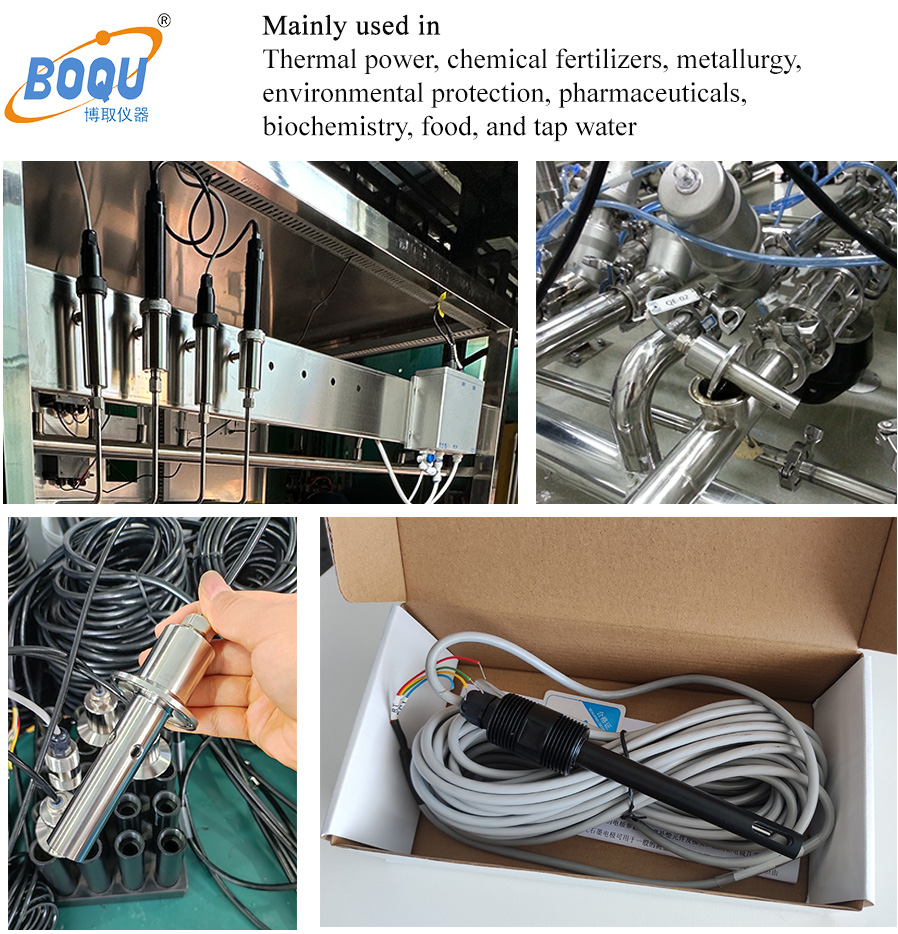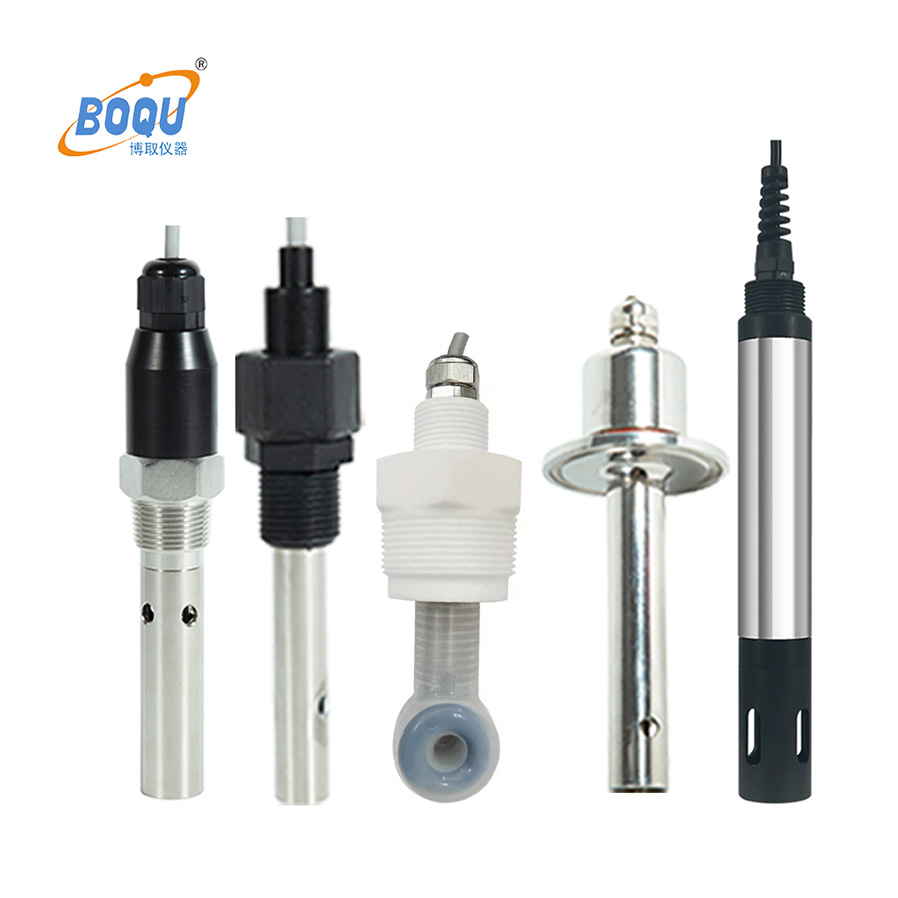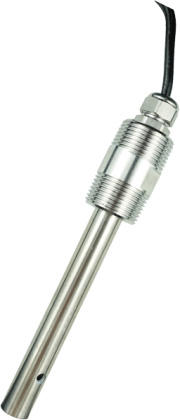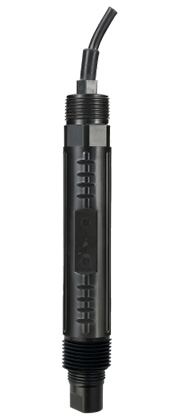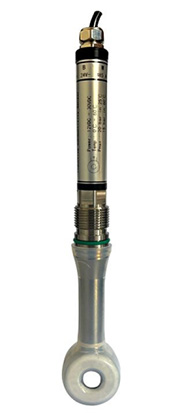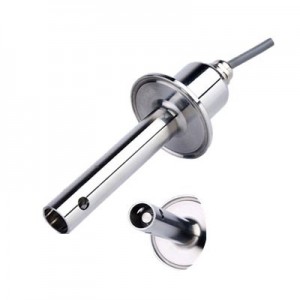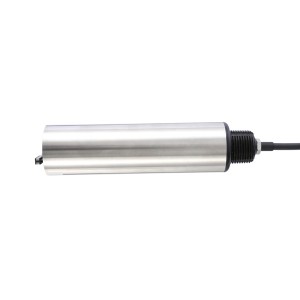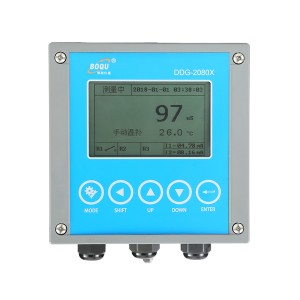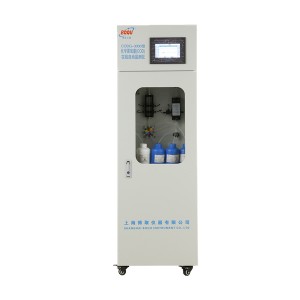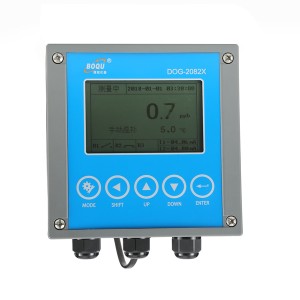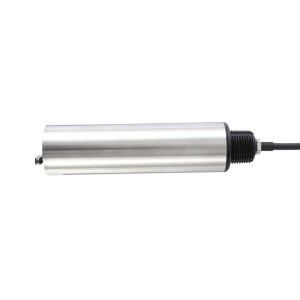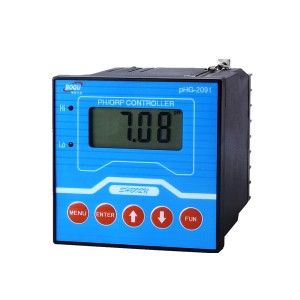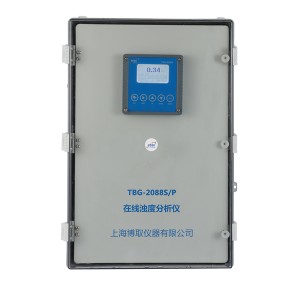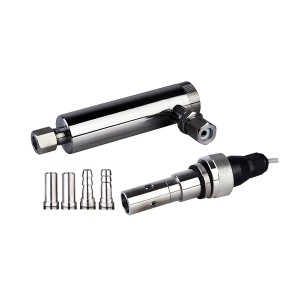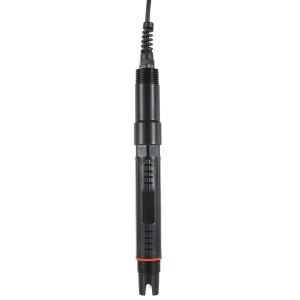Conductivity is a widely utilized analytical parameter in various applications, including water purity assessment, reverse osmosis monitoring, cleaning process validation, chemical process control, and industrial wastewater management.
A conductivity sensor for aqueous environments is an electronic device designed to measure the electrical conductivity of water.
In principle, pure water exhibits negligible electrical conductivity. The electrical conductivity of water primarily depends on the concentration of ionized substances dissolved in it—namely, charged particles such as cations and anions. These ions originate from sources such as common salts (e.g., sodium ions Na⁺ and chloride ions Cl⁻), minerals (e.g., calcium ions Ca²⁺ and magnesium ions Mg²⁺), acids, and bases.
By measuring electrical conductivity, the sensor provides an indirect evaluation of parameters such as total dissolved solids (TDS), salinity, or the extent of ionic contamination in water. Higher conductivity values indicate a greater concentration of dissolved ions and, consequently, reduced water purity.
Working Principle
The fundamental operating principle of a conductivity sensor is based on Ohm's Law.
Key components: Conductivity sensors typically employ either two-electrode or four-electrode configurations.
1. Voltage application: An alternating voltage is applied across one pair of electrodes (the driving electrodes).
2. Ion migration: Under the influence of the electric field, ions in the solution migrate toward electrodes of opposite charge, generating an electric current.
3. Current measurement: The resulting current is measured by the sensor.
4. Conductivity calculation: Using the known applied voltage and the measured current, the system determines the electrical resistance of the sample. Conductivity is then derived based on the sensor's geometric characteristics (electrode area and inter-electrode distance). The fundamental relationship is expressed as:
Conductivity (G) = 1 / Resistance (R)
To minimize measurement inaccuracies caused by electrode polarization (due to electrochemical reactions at the electrode surface) and capacitive effects, modern conductivity sensors utilize alternating current (AC) excitation.
Types of Conductivity Sensors
There are three primary types of conductivity sensors:
• Two-electrode sensors are suitable for high-purity water and low-conductivity measurements.
Four-electrode sensors are employed for medium to high-conductivity ranges and offer enhanced resistance to fouling compared to two-electrode designs.
• Inductive (toroidal or electrodeless) conductivity sensors are used for medium to very high conductivity levels and exhibit superior resistance to contamination due to their non-contact measurement principle.
Shanghai Boqu Instrument Co., Ltd. has been committed to the field of water quality monitoring for 18 years, manufacturing high-quality water quality sensors that have been distributed to over 100 countries worldwide. The company offers the following three types of conductivity sensors:
The DDG - 0.01 - / - 1.0/0.1
Measurement of low conductivity in 2-electrode sensors
Typical applications: water preparation, pharmaceuticals (water for injection), food and beverage (water regulation and preparation), etc.
EC-A401
High conductivity measurement in 4-electrode sensors
Typical applications: CIP/SIP processes, chemical processes, wastewater treatment, the paper industry (cooking and bleaching control), food and beverage (phase separation monitoring).
IEC-DNPA
Inductive electrode sensor, resistant to strong chemical corrosion
Typical applications: Chemical processes, pulp and paper, sugar making, wastewater treatment.
Key Application Fields
Conductivity sensors are among the most widely utilized instruments in water quality monitoring, providing critical data across a range of sectors.
1. Water Quality Monitoring and Environmental Protection
- Monitoring of rivers, lakes, and oceans: Used to assess overall water quality and detect contamination from sewage discharge or seawater intrusion.
- Salinity measurement: Essential in oceanographic research and aquaculture management for maintaining optimal conditions.
2. Industrial Process Control
- Ultra-pure water production (e.g., in semiconductor and pharmaceutical industries): Enables real-time monitoring of purification processes to ensure compliance with stringent water quality standards.
- Boiler feedwater systems: Facilitates control of water quality to minimize scaling and corrosion, thereby enhancing system efficiency and longevity.
- Cooling water circulation systems: Allows monitoring of water concentration ratios to optimize chemical dosing and regulate wastewater discharge.
3. Drinking Water and Wastewater Treatment
- Tracks variations in raw water quality to support effective treatment planning.
- Assists in controlling chemical processes during wastewater treatment to ensure regulatory compliance and operational efficiency.
4. Agriculture and Aquaculture
- Monitors irrigation water quality to mitigate the risk of soil salinization.
- Regulates salinity levels in aquaculture systems to maintain an optimal environment for aquatic species.
5. Scientific Research and Laboratory Applications
- Supports experimental analysis in disciplines such as chemistry, biology, and environmental science through precise conductivity measurements.
Post time: Sep-29-2025

